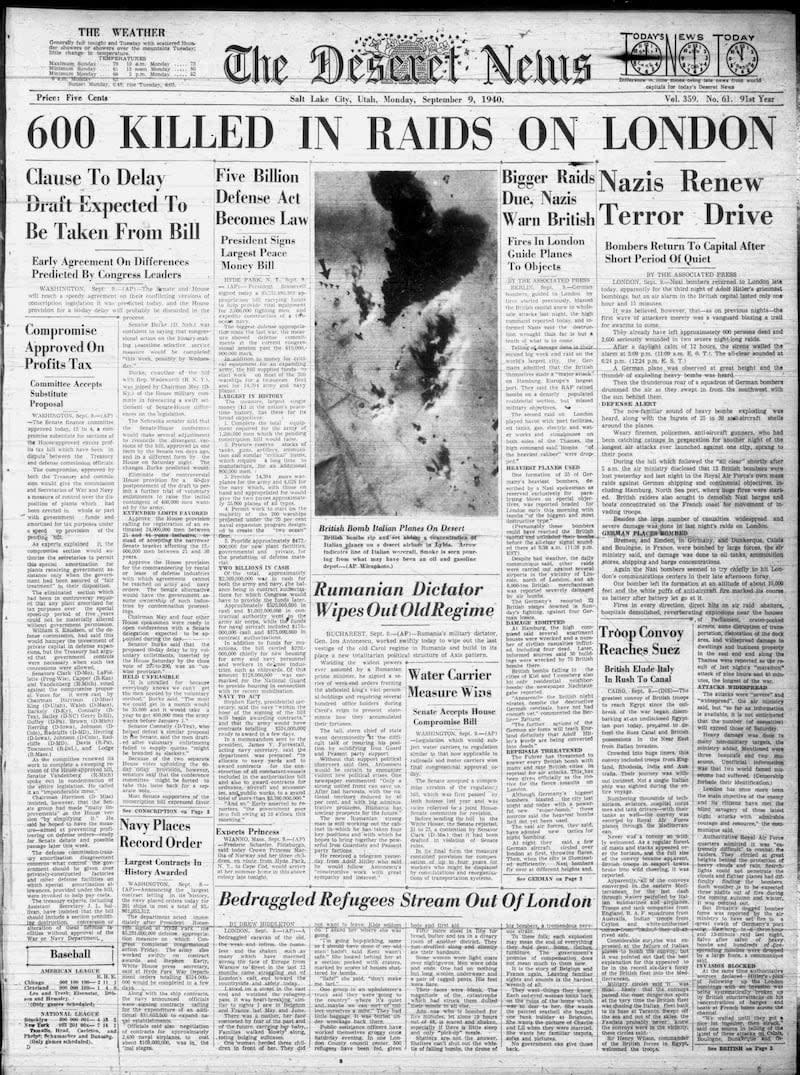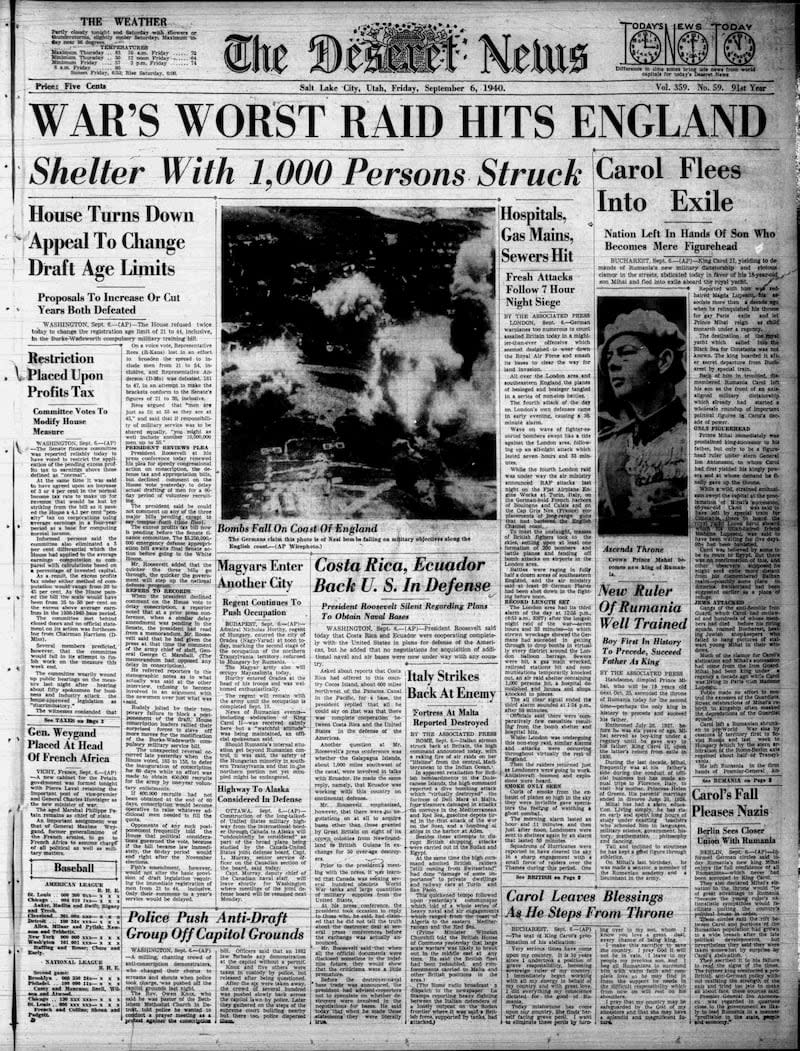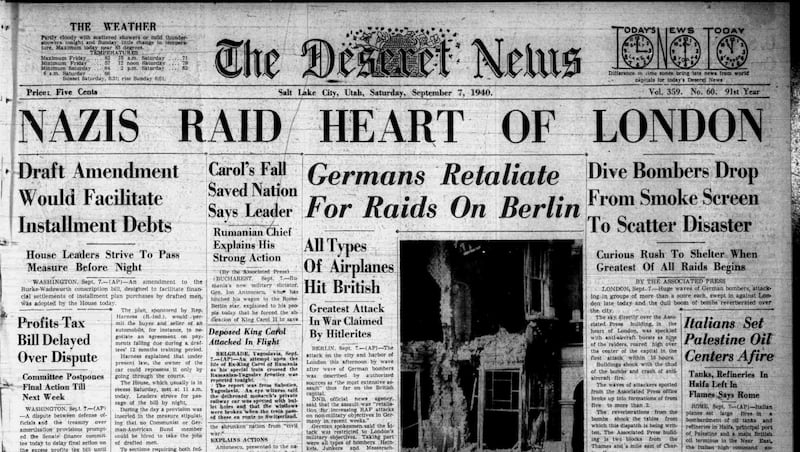A look back at local, national and global events through the Deseret News archives.
On September 7, 1940, Nazi Germany began an intensive bombing campaign against Britain during World War II, with an air raid on London. This attack became known as the Blitz and lasted eight months. The campaign resulted in more than 40,000 civilian deaths.
And it was a difficult time for the stoic British people. The cultural and popular centre of Western Europe endured nightly attack after nightly attack by the German air force. Many had to seek shelter in underground stations around the city.
According to historical accounts, the main barrage attacks were a major daytime raid on London on 15 September, a major raid on 29 December which caused a devastating fire in London, and a major raid on 10–11 May 1941.
In reality, other major cities such as Liverpool, Birmingham, Manchester and Hull were also targeted, as well as British port cities such as Bristol, Cardiff, Belfast, Glasgow and Southampton.
But about half of the deaths occurred in the London area, where a reported million homes were destroyed or damaged. The attacks lasted 57 days, with one day of respite.
Newspapers of the time reported on the massacre from a distance, including through war correspondents.
And there were many heroes who were part of the English citizen army: nurses, workers, farmers, and so on. One of them was Thomas Peirson Frank.
According to AP reportsAfter each raid, Frank led a secret unit of engineers and workers who worked night after night during World War II to repair the flood defences along the Thames that had been damaged by German air raids.
The men used rubble, sandbags and eventually concrete to fill in gaps in the Thames Wall, which threatened to flood thousands of businesses and homes.
London was on fire during the war, but it was never flooded, thanks largely to Frank, the Chief Engineer of the London County Council, and his crew.
Researchers found files revealing the truth that had been hidden from Londoners during the war and later forgotten: the river wall was hit 121 times between 1940 and 1945, 84 of them during the Blitz from September 1940 to May 1941.
Frank was knighted for his work in 1942—although details of his work were kept secret—and later became president of the Institution of Civil Engineers. He died in 1951.


Here is a selection of stories about the Blitz and how Londoners survived, from the Deseret News archives:
“New releases are about London during the Second World War and essays about nature“
“British Museum shows epic, intimate sides of World War I“
“Honor for hero who saved London from floods in WWII“
“Happy memories of London and the light at the end of World War II“
“Long-secret operating room beneath castle opens to public“
“‘‘British slime’ is challenged again“
“Defusing World War II grenades is a huge task in Germany“
“Suspected WWII bomb found in London’s River Thames“









